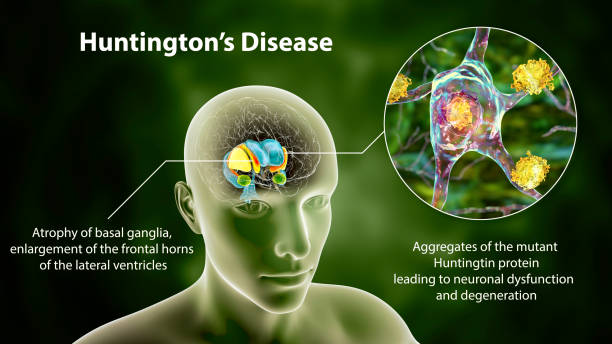Blood Pressure Management Strategy During Surgery Has No Impact on Major Cardiovascular Complications
Study found no difference between hypotension avoidance and hypertension avoidance
Among patients undergoing non-cardiac surgery who were also on blood pressure medications, a multifaceted strategy to try to keep their blood pressure from dropping to a potentially dangerous low level immediately before, during and for up to two days after surgery made no difference in the rates of major cardiovascular events in the 30 days following surgery. The research was presented at the American College of Cardiology’s 71st Annual Scientific Session.
“We found no difference between the two strategies we tested—hypotension avoidance versus hypertension avoidance—for our primary endpoint, which was a composite of death from vascular disease and nonfatal heart injury, stroke or cardiac arrest at 30 days after surgery,” said Maura Marcucci, MD, assistant professor of clinical epidemiology and perioperative medicine at McMaster University in Hamilton, Canada, and the study’s project officer.
Patients undergoing non-cardiac surgery (gastrointestinal, orthopedic, urological or vascular procedures) are at risk of experiencing a drop in their blood pressure during the perioperative period, which includes the time during the operation and the first couple of days afterward. Anesthesia, blood loss, infection and heart arrhythmias can all cause blood pressure to drop, Marcucci said. Low blood pressure (hypotension) can lead to organ damage because the organs are not getting enough blood and oxygen to function normally. The mean arterial pressure (MAP) is the average pressure in a patient’s arteries during one heartbeat cycle and is used as an indicator of blood flow to vital organs. In observational studies, a MAP below 70 mmHg (or beats per minute) during surgery has been linked to cardiovascular complications and death.
For patients undergoing non-cardiac surgery who are also on blood pressure medications, it has been unclear how to best manage their blood pressure and their medications during the perioperative period, Marcucci said. A very high blood pressure (hypertension) perioperatively may also lead to organ damage. Currently, the most common approach has been to continue patients’ blood-pressure medications, reflecting more of a hypertension-avoidance strategy, she said.
Previous studies have suggested, however, that stopping certain types of blood pressure medications (such as those in the classes known as ACE inhibitors and ARBs) during the perioperative period might reduce the risk of hypotension and possibly the related heart and vascular complications. However, these studies were too small to provide a clear answer.
The current study was part of the Perioperative Ischemic Evaluation-3 (POISE-3) trial, a large international trial that investigated the safety and efficacy of a drug to reduce surgical bleeding in patients with cardiovascular risk factors who were undergoing non-cardiac surgery. A total of 7,490 patients enrolled in POISE-3 who were taking at least one blood pressure medication to treat hypertension or other cardiovascular conditions also participated in the blood-pressure management study.
Patients (average age of 70, 56% men, 72% on ACE inhibitors or ARBs) were randomly assigned to one of two strategies. The two strategies were called hypotension avoidance and hypertension avoidance to reflect the main blood pressure abnormality they were trying to avoid during the perioperative period—too-low or too-high blood pressure, respectively.
All patients were asked to not take their blood pressure medications the night before or the morning of their surgery and to bring the medications with them to the hospital. At the hospital, the different strategies were applied depending on which group patients were assigned to.
In the hypotension-avoidance group, if patients were taking ACE inhibitors or ARBs, those medications were withheld before surgery and for the first two days afterward. For other types of blood pressure medications, decisions on whether to continue or discontinue them were based on the patient’s systolic blood pressure (SBP; the top number in a blood pressure reading) levels. Anesthesiologists in the operating rooms (where patients’ blood pressure can be monitored continuously) were asked to aim to keep patients’ MAP at or above 80 mmHg throughout their surgery, using strategies at their discretion.
In the hypertension-avoidance group, patients took their usual blood pressure medications at the hospital before their operation. Their anesthesiologists were asked to aim to keep their MAP at or above 60 mmHg throughout their surgery using strategies at their discretion. After surgery, patients in this group continued taking all their blood pressure medications as they normally would.
All patients remained on their assigned blood pressure management strategy for two days after surgery or until they were discharged from the hospital, whichever came first. In the hypotension-avoidance group, on day three after surgery or at discharge, patients could resume taking all their blood pressure medications. The researchers collected data on all major cardiovascular events that occurred up to 30 days after surgery.
“Our hypothesis was that we would see fewer major cardiovascular events—the primary endpoint—among patients assigned to the hypotension-avoidance strategy,” Marcucci said. “However, when we analyzed the data, we found no difference in the incidence of these events between patients assigned to the hypotension-avoidance strategy and those assigned to the hypertension-avoidance strategy. In both groups, 14% of patients experienced the primary endpoint.”
In additional analyses, the researchers found that the average difference in blood pressure and heart rate, at discrete times, between the two groups of patients was less than 2 mmHg.
“We concluded that the most likely reason we found no difference between the two strategies was that they did not have a substantial differential impact on blood pressure or heart rate during the perioperative period,” Marcucci said. “Our study answered two important questions that confront anesthesiologists, cardiologists and internists every day worldwide. It taught us that ensuring that patients’ MAP remains above 60 throughout the surgery is safe and that targeting a higher MAP does not make a difference. Also, whether or not patients continued to take all of their chronic blood pressure medications throughout the perioperative period did not make a real difference to their blood pressure and heart rate and to major cardiovascular events.”
A limitation of the study, Marcucci said, is that the researchers did not systematically collect data on every episode of significantly low blood pressure that required an intervention and, therefore, could not determine whether these events occurred more frequently in one group than in the other.
Source: American College of Cardiology
Full bibliographic information
“The Effects Of A Hypotension-avoidance Strategy Versus A Hypertension-avoidance Strategy In Patients Undergoing Noncardiac Surgery,” Maura Marcucci, P.J. Devereaux, et al., American College of Cardiology 71st Annual Scientific Session, April 4, 2022
04/04/2022 American College of Cardiology





